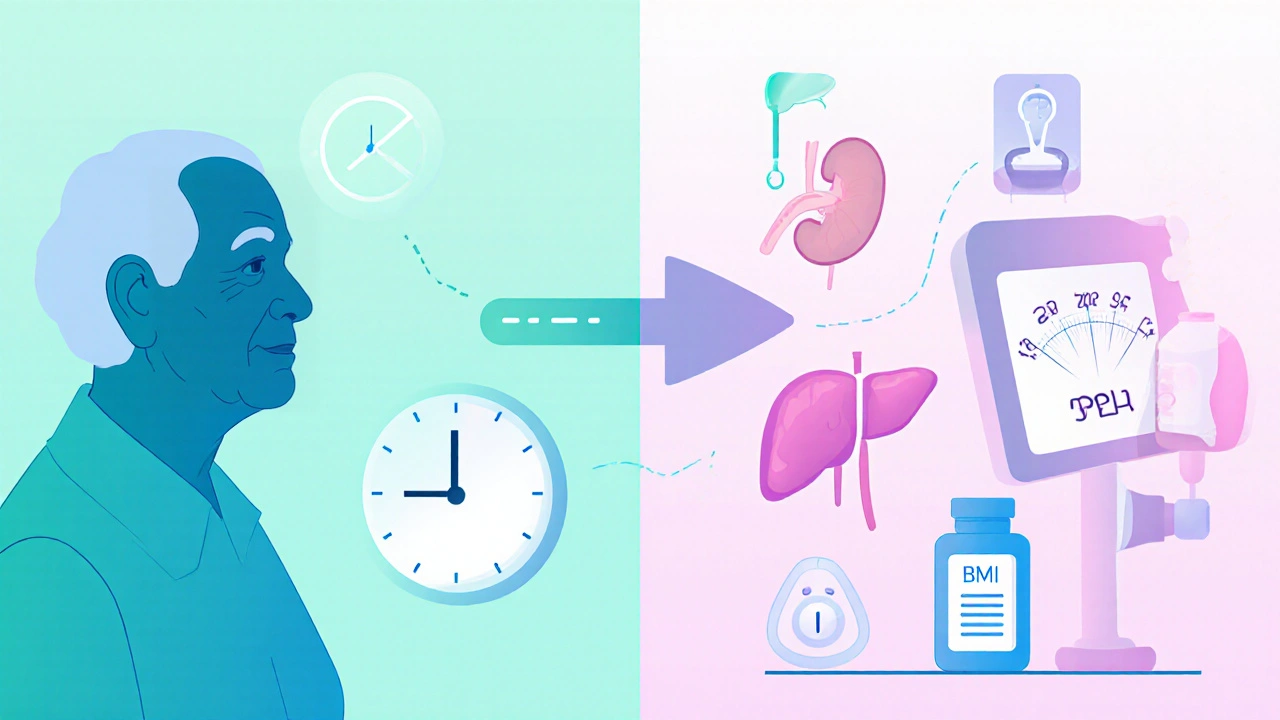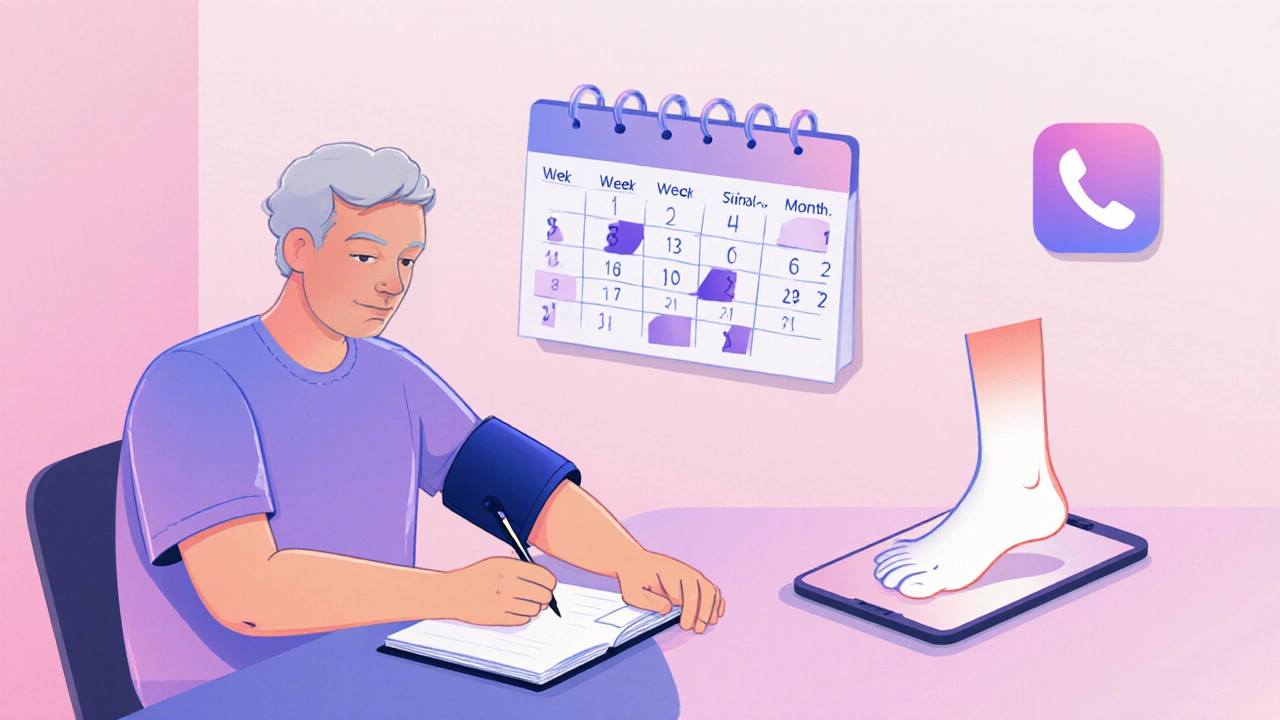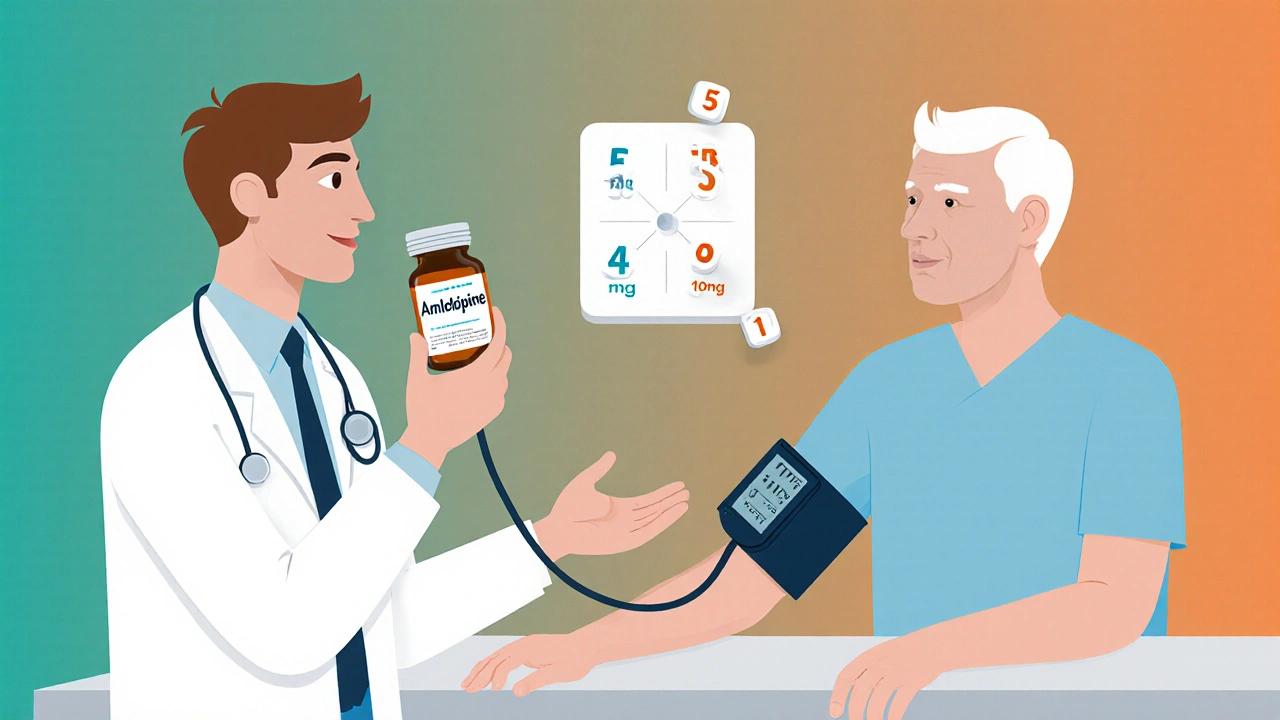24 Oct 2025
- 9 Comments
When your doctor mentions Amlodipine a calcium channel blocker used to treat high blood pressure and chest pain, the next question is usually: “How much should I take?” Getting the dose right matters for controlling your condition while keeping side effects low. Below you’ll find a step‑by‑step guide that walks you through the factors that determine the ideal amlodipine dosage, how doctors decide on the starting dose, what adjustments look like, and when to call your pharmacist or GP.
Key Takeaways
- Typical adult dose for hypertension starts at 5 mg once daily; many patients stay on that dose.
- For angina, the usual range is 5‑10 mg daily, with the higher end reserved for those who need stronger blood‑pressure control.
- Kidney or liver impairment often calls for a lower starting dose (2.5 mg) and slower titration.
- Common side effects-like swollen ankles or flushing-are usually dose‑related and improve with adjustments.
- Never change your dose without discussing it with a healthcare professional; drug interactions can change how amlodipine works.
What Is Amlodipine and How Does It Work?
Calcium channel blocker a class of drugs that relaxes the smooth muscle of blood vessels by blocking calcium entry into cells. When the vessels relax, resistance drops, and blood pressure falls. The same mechanism eases the heart’s workload, which helps relieve angina (chest pain caused by reduced blood flow). Amlodipine’s long half‑life (about 30-50 hours) means it can be taken once a day, making adherence easier.
Standard Starting Doses
Doctors usually base the first prescription on the condition being treated and the patient’s overall health.
| Condition | Initial Dose | Typical Maintenance Range | Maximum Recommended Dose |
|---|---|---|---|
| Hypertension | 5 mg daily | 5‑10 mg daily | 10 mg daily |
| Stable Angina | 5 mg daily | 5‑10 mg daily | 10 mg daily |
| Severe Hypertension (with physician oversight) | 5 mg daily | 5‑10 mg daily | 10 mg daily |
If you have liver or kidney disease, the doctor may start you at 2.5 mg daily and increase slowly.
Factors That Influence Your Personal Dose
Even though the tables above look simple, many personal factors shift the dose curve.
- Age: Older adults (≥65 years) often metabolize drugs more slowly, so a lower starting dose reduces the risk of dizziness.
- Kidney function: Kidney function measured by eGFR, affects drug clearance. Reduced eGFR may merit a 2.5 mg start.
- Liver health: Amlodipine is processed by the CYP3A4 enzyme in the liver. Liver disease slows clearance, again pushing the dose lower.
- Concurrent meds: Certain drugs inhibit CYP3A4 (e.g., ketoconazole, clarithromycin). When taken together, the plasma level of amlodipine rises, so a lower dose is safer.
- Weight and BMI: Very low body weight can increase drug exposure per kilogram, leading clinicians to start low.
- Blood pressure target: Some patients need an aggressive goal (<130/80 mmHg) and may tolerate the higher end of the range.

How Doctors Adjust the Dose
Typical titration is done in 2‑week intervals. The process looks like this:
- Check baseline blood pressure and heart rate after the first week.
- If the target isn’t reached and side effects are minimal, increase by 2.5 mg (e.g., from 5 mg to 7.5 mg). Some tablets only come in 5 mg and 10 mg, so the next step is usually 10 mg.
- Re‑measure after another 2 weeks. If you’re still above goal, consider adding a second antihypertensive rather than pushing beyond 10 mg.
- If you develop swelling, dizziness, or unusual fatigue, the doctor may reduce the dose or switch to a different class.
This stepwise approach ensures you get the benefit of lower blood pressure without jumping straight to the maximum dose.
Common Side Effects and Dose Relationship
Most people tolerate amlodipine well, but some notice:
- Peripheral edema (swollen ankles/feet) - often dose‑related; reducing the dose or adding a diuretic helps.
- Flushing or warmth - usually mild and improves after a week.
- Dizziness or light‑headedness - can signal too low a blood pressure; a slight dose reduction may be needed.
- Headache - common during the first few days as the vessels relax.
If side effects persist beyond two weeks or become severe, contact your healthcare provider. They may adjust the dose or try a different calcium channel blocker such as nifedipine or diltiazem.
Amlodipine Compared to Other Calcium Channel Blockers
| Drug | Typical Dose Range | Half‑Life | Key Advantage |
|---|---|---|---|
| Amlodipine | 5‑10 mg daily | 30‑50 hrs | Once‑daily dosing, gentle onset |
| Nifedipine (extended‑release) | 30‑60 mg daily | 2‑5 hrs | Rapid blood‑pressure drop |
| Diltiazem | 120‑360 mg daily | 3‑5 hrs | Effective for rate‑control in atrial fibrillation |
Choosing the right agent depends on your specific health picture. Amlodipine’s long half‑life makes it the go‑to for most patients who want a simple regimen.
Drug Interactions You Should Know
Because amlodipine is metabolized by CYP3A4, drugs that affect this enzyme can change its blood levels.
- Inhibitors (e.g., ketoconazole, itraconazole, clarithromycin) - increase amlodipine levels; dose often reduced by 50 %.
- Inducers (e.g., rifampin, carbamazepine, phenytoin) - lower amlodipine levels; may need a higher dose.
- Simultaneous antihypertensives (e.g., ACE inhibitors, ARBs) - usually safe, but monitor for excessive blood‑pressure drop.
- Statins (especially simvastatin) - amlodipine can boost statin levels, raising the risk of muscle pain. Doctors often lower the statin dose.
Always hand your pharmacist a complete medication list, including over‑the‑counter products and supplements.

Monitoring and Follow‑Up
After you start taking amlodipine, the typical follow‑up schedule looks like this:
- Week 1: Check blood pressure at home; note any new swelling or dizziness.
- Week 2-3: Return to the clinic for a formal BP reading. Doctor may adjust dose.
- Month 3: Evaluate longer‑term control, side‑effect profile, and any needed labs (e.g., liver enzymes if you’re on a CYP3A4 inhibitor).
Good home monitoring-using a validated cuff and logging results-helps your doctor make precise adjustments.
Special Populations
While most adults follow the standard dosing, certain groups need extra care:
- Pregnancy: Amlodipine is classified as Category C. It’s used only if the benefit outweighs risk.
- Breastfeeding: Small amounts pass into milk; discuss alternatives with your provider.
- Children: Not FDA‑approved for routine use under 18 years; pediatric dosing is handled by specialists.
- Elderly: Start at 2.5 mg if frail or prone to falls, then titrate slowly.
When to Call Your Doctor
Even with a well‑tuned dose, some warning signs mean you need professional advice right away.
- Sudden, severe swelling of the legs or feet.
- Chest pain that worsens despite medication.
- Feeling faint, especially when standing up quickly.
- Unexplained rapid heartbeat (tachycardia) or palpitations.
These symptoms could signal an overdose, an interaction, or a need to switch therapy.
Quick FAQ
Can I take amlodipine with my blood‑pressure pill?
Yes, most doctors combine amlodipine with ACE inhibitors or ARBs for stronger control, but the total effect on blood pressure should be monitored.
What should I do if I miss a dose?
Take the missed tablet as soon as you remember, unless it’s almost time for the next dose. In that case, skip the missed pill and continue with your regular schedule. Don’t double‑dose.
Is a higher dose always better for blood‑pressure control?
Not necessarily. Beyond 10 mg the benefit plateaus while the risk of swelling and dizziness rises. Doctors usually add a second, different‑class medication instead of pushing the dose higher.
Can amlodipine cause headaches?
Yes, early‑stage headaches are common as your blood vessels relax. They often fade after a few days. If they persist, let your doctor know.
Do I need regular blood tests while on amlodipine?
Routine labs aren’t required for most patients, but if you’re on interacting drugs or have liver disease, your doctor may check liver enzymes periodically.
Finding the right amlodipine dosage is a partnership between you and your healthcare team. By understanding the factors that influence dosing, keeping an eye on side effects, and staying in touch with your doctor, you can keep blood pressure in check without unwanted surprises.


Grace Silver
October 24, 2025When thinking about amlodipine you have to balance the art of medicine with the science of pharmacokinetics. The standard starting dose of 5 mg is like a gentle invitation to the bloodstream. Older adults often metabolize slower so a 2.5 mg start can feel like a softer handshake. Kidney function measured by eGFR tells the liver how much work it has left. If the kidneys are shy you lower the dose and watch the pressure drift down. Liver disease reduces the activity of CYP3A4 and therefore raises plasma levels. Drug‑drug interaction with a CYP3A4 inhibitor such as clarithromycin can double the exposure. In those cases a clinician may halve the dose and titrate cautiously. The goal is not just numbers on the cuff but also preventing swollen ankles and flushing. Those side effects are dose‑related and often fade as you settle into the right amount. If you feel dizzy after the first week consider a slower uptitration. The half‑life of 30‑50 hours gives you a steady state after about a week. Consistency matters; taking it at the same time each day helps adherence. Patients with severe hypertension may need the full 10 mg, but only under supervision. Always discuss any over‑the‑counter supplements because they can shift the balance. In short, listen to your body, keep your doctor in the loop, and let the dose be a dialogue, not a decree.
Clinton Papenfus
October 24, 2025Your summary elegantly captures the clinical considerations while maintaining brevity.
Deborah Galloway
October 24, 2025Great overview! I appreciate the clear breakdown of when to start low and how to adjust. This will help many patients feel more confident about their therapy.
Charlie Stillwell
October 24, 2025Wow this is just basic pharma 101 🤦♂️ If you’re not checking CYP interactions you’re basically gambling with hypertension 🚩
Ken Dany Poquiz Bocanegra
October 24, 2025Start low, monitor, adjust-simple as that.
Tamara Schäfer
October 24, 2025Yes I think this info is realy helpful and gives me hope for a smoother adaption.
Tamara Tioran-Harrison
October 24, 2025Oh sure, because everyone loves counting pills all day :)
kevin burton
October 24, 2025The key points are to start at 5 mg, consider organ function, and adjust based on response and side effects.
Buddy Bryan
October 24, 2025Don’t oversimplify, patients need personalized dosing, not a one‑size‑fits‑all!